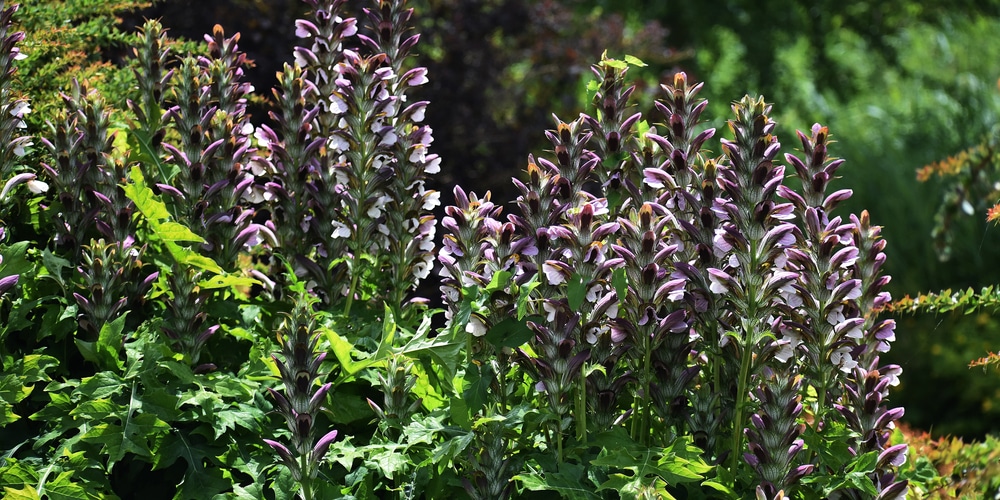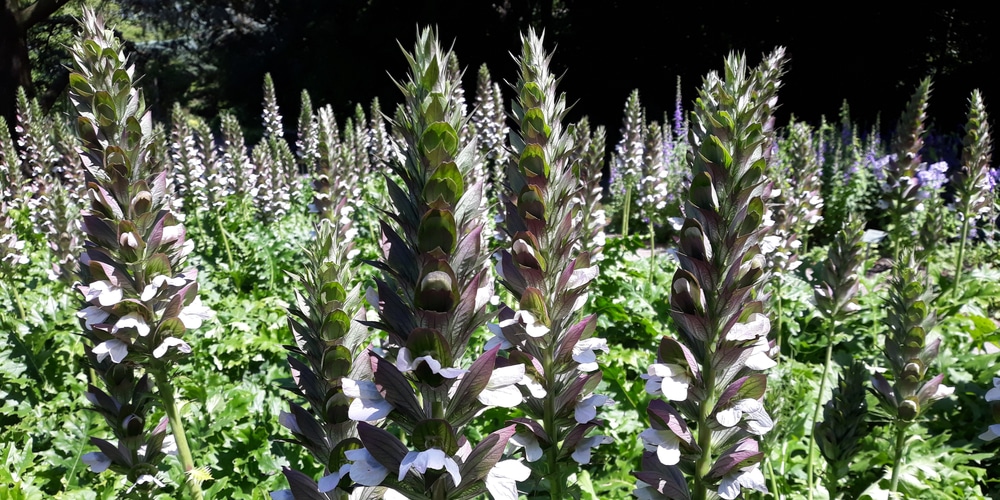It’s commonplace to find the Acanthus spinosus plant in a garden, initially originating from Northwest Africa and the Mediterranean. A leading reason for the plant’s ubiquitous presence is its capacity to withstand conditions that do not favor its growth and the fact that it blooms in Pacific Northwest gardens.
Typically, the plants are low maintenance plants with heightened resistance capabilities, which simplify their growth and care.
The plants are typically bold-textured accent plants with a striking beauty on their front border with rhododendrons.
Their plant’s flowers are long-lasting, blooming late spring or during the early summer times and last to the end of the summer season.
If the plant is given the minimum care, it is definite to guarantee a magnificent appearance in the garden throughout the summer.
Best Garden Site Tips for Acanthus spinosus
One of the common ideologies about the plant is its non-invasive nature. However, it gets planted in a location that favors the environment; it exhibits an aggressive growth that can become invasive.
This ability has both merits and demerits depending on the purpose of growing, which necessitates understanding the suitable growth parameters when planting.
Another critical fact to note is their plant’s root quality to hold firmly on the ground, which is the genuine reason for its prosperity in most environments. As such, it may not be easy to get rid of it if planted in the wrong garden.
The plant requires space for its spread. Therefore, interested parties should plant it in a garden with a barrier of about 10 inches in depth to contain its roots within the area that someone intends it to grow. Furthermore, someone can comfortably plant it in a large pot.
General Information on Acanthus spinosus
- Requirements: Sun or partly shady weather, medium moisture, and well-drained soils
- Best planting and pruning seasons: The plants should be planted during the spring or summer season, while the recommendable pruning seasons are autumn or winter.
- Alternative ways to start growing the plant: Starting growing the plant is quite simple since there are many alternatives available, including planting the seeds and vegetative reproduction.
- Flower appearance: The plant’s flowers have a typical purple-pink coloration at the top and also white at the bottom. The flowers have an oyster to mouth shape. They have a stunning appearance.
- Pest or diseases: There are not many diseases associated with the plant. The common pests invading the plant are slugs or snails.
Planting and Caring for Acanthus spinosus
The plant is not vulnerable to soil conditions and has survival qualities that enable it to grow on any soil. Even so, the soil should not be waterlogged. It is essential to plant young plants during the spring.
The plant’s preferred weather condition is sunny weathered locations, depicting flourishing flowering patterns.
Appropriate plant care involves cutting the flowers short during the autumn to give the garden a tidy appearance. Plants grown in pretty cold areas should also be accorded adequate care to enhance sustained plant growth and prosperity.
Acanthus spinosus is not affected by cold and requires minimal maintenance during the winter. It is recommendable to add some mulch to the soil and remove any dead leaves in late winter or early spring to maintain the garden with pure magnificence.
The plants have large spiky thistle-like leaves whose pruning is relatively easy and comfortable. They are rarely affected by diseases, but slugs may hinder their growth. It is possible to get rid of slugs using natural techniques which include but are not limited to:
- Increasing natural predators of slugs such as beneficial insects, toads, frogs, or beetles.
- Removing any debris in the garden.
- Creating barriers that irritate the skin of slugs such as sand, coffee grounds, wood ashes, and eggshells.
How to Get Rid of Acanthus spinosus
Typically, the plant has roots that hold firmly on the soil, making removing it quite involving. Simply remove the plant by digging down the grounds to about 1 ft (30cm), ensuring removing every root visible. Afterward, replace the soil with untainted soil. It is recommendable to cover the ground with black plastic and leave it for six months to achieve the best results.
Acanthus Spinosus: Conclusion
Acanthus spinosus is a plant guaranteed to confer a heightened level of magnificence to anybody’s garden. Its requirements are simple.
It is, however, vital to have thorough information on the plant growth requirements and much more its care to enjoy the striking beauty related to it.
Related Article: Acanthus Oak Leaf Growth and Care

